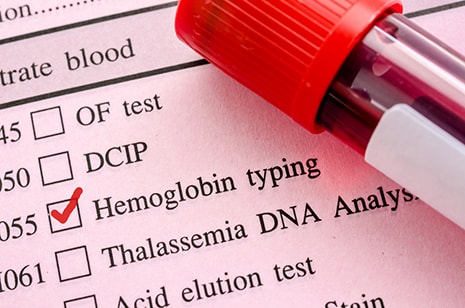Researchers from the University of Washington debut a new way to screen for various blood conditions
Orange County, CA - October 13th 2016 - Hemoglobin is a protein molecule responsible for carrying oxygen from the lungs to organs and bodily tissues and returning CO2 to be expelled through the lungs. Insufficient amounts of hemoglobin result in stunted distribution of oxygen, which can cause a number of conditions previously measured by painful blood draws or expensive pulse oximeters.
Thanks to researchers from the University of Washington, a new application that allows fast, accurate, hemoglobin readings could eliminate the need for invasive blood draws. HemaApp works in tandem with a smartphone’s (Nexus 5 in this case) native camera and various other light sources to detect the color intensity of the blood flowing through one’s finger. The process is simple, a patient places their finger over the camera lens and then, using wavelengths of light and infrared energy passing through the appendage, a series of videos are created. Color absorption and reflection of colors is then analyzed by a machine learning algorithm which distinguishes concentrations of hemoglobin and other blood components.
In the initial stages of testing the app, the team evaluated the phone in 3 separate instances. The first was solely using the phone’s native camera. Next, the phone camera was used in the presence of an incandescent bulb. Lastly, the phone camera was equipped with an accessory light and then tested. While the study size only amounted to 31 patients, results indicated that the light accessory was more accurate (82%) than Masimo’s Pronto-7(81%), the current and expensive FDA approved way of non-invasively measuring hemoglobin. The app using only the smartphone’s native camera scored an impressive 69% and in the presence of an incandescent bulb there was 74% accuracy.

The technology holds promise to those suffering from other blood conditions such as anemia. If left undiagnosed the patient can worsen from malnourishment or parasitic disease. UW Medicine, Seattle Children’s Hospital and Seattle Cancer Care Alliance pediatric cancer specialist and co-author of the study, Doug Hawkins, has said, “The ability to screen quickly with a smartphone-based test could be a huge improvement to delivering care in limited-resource environments.” This is particularly exciting for those in developing countries where the cleanliness of blood testing is often disputed.
Blood tests remain the most accurate form of measuring hemoglobin, however the HemaApp is an affordable and non-invasive way to see if such tests are warranted. The next step in research is to further data collection by expanding trials both nationally and internationally to improve accuracy rates.
This research was presented at the Association for Computing Machinery’s 2016 International Joint Conference on Pervasive and Ubiquitous Computing (UbiComp 2016) in Germany where is received the “Best Paper” award.
Contact Ampronix:

Email: info@ampronix.com
International Sales: +1 949-273-8000
Domestic Sales: 1800-400-7972 for US and Canada
Follow Us:
Share This Article:
View our Product Catalog Online Here
About Ampronix
Ampronix is a renowned authorized master distributor of the medical industry's top brands as well as a world-class manufacturer of innovative technology. Since 1982, Ampronix has been dedicated to meeting the growing needs of the medical community with its extensive product knowledge, outstanding service, and state-of-the-art repair facility. Ampronix prides itself on its ability to offer tailored, one-stop solutions at a faster and more cost-effective rate than other manufacturers. Ampronix is an ISO & ANSI/ESD certified facility. To learn more go here.
Researchers from the University of Washington debut a new way to screen for various blood conditions Orange County, CA – October 13th 2016 – Hemoglobin is a protein molecule responsible for carrying oxygen from the lungs to organs and bodily tissues and returning CO2 to be expelled through the lungs. Insufficient amounts of hemoglobin result […]



